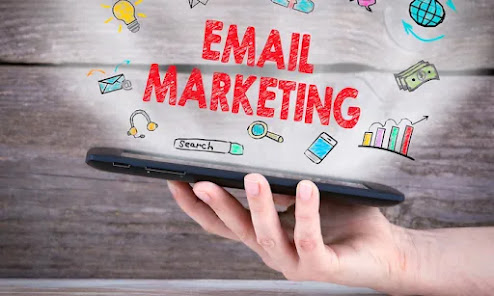Email marketing is a versatile and potent tool that enables
businesses to establish connections with their audience through various means.
In this article, we will delve into a range of email marketing approaches
tailored to different objectives and goals.
1. Promotional Emails
Their primary purpose is to showcase products, services, or
special offers. These emails often feature compelling visuals, enticing
content, and clear calls to action (CTAs) designed to motivate recipients to
make a purchase.
2. Newsletter Emails
Newsletter emails primarily serve an informative role,
providing subscribers with updates, news, and insights related to a company,
industry, or specific niche. Their aim is to engage the audience and foster a
sense of community and loyalty.
3. Welcome Emails
Welcome emails are dispatched to new subscribers immediately
after they join an email list. They serve as the initial point of contact and
provide an opportunity to introduce your brand, set expectations, and extend a
warm welcome. Including special offers or incentives in welcome emails can be
particularly effective.
4. Abandoned Cart Emails
Abandoned cart emails target customers who have placed items
in their shopping carts but have not completed the purchase. These emails often
contain product reminders and incentives to encourage shoppers to finalize
their orders.
5. Drip Email Campaigns
Drip campaigns consist of a series of emails sent over time
to nurture leads and guide them through the customer journey. Each email in the
series is meticulously crafted to offer valuable information, address
objections, and progress the recipient closer to conversion.
6. Transactional Emails
Transactional emails are triggered by a user's actions or
specific events, such as a purchase confirmation, shipping notification, or
password reset. While their primary function is functional, they also provide
opportunities for upselling and cross-selling.
7. Personalized Recommendation Emails
Personalized recommendation emails harness user data to
suggest products or content aligned with the recipient's preferences and
behavior. These emails can significantly enhance engagement and drive sales.
8. Event and Webinar Invitations
For companies hosting events, webinars, or workshops, email
invitations are a potent means of promotion. These emails should contain event
particulars, registration links, and compelling reasons why recipients should
participate.
9. Re-engagement Emails
Re-engagement emails are sent to subscribers who have become
less active or have not engaged with emails for a while. They aim to rekindle
their interest and motivate them to reconnect with your brand.
10. Educational Emails
Educational emails disseminate valuable information, tips,
or tutorials related to specific topics or industries. Such emails position
your brand as an authority and assist in building trust among subscribers.
11. Customer Feedback and Surveys
Collecting feedback from customers is pivotal for
improvement. Email can be used to solicit customer feedback, conduct surveys,
and gather insights that inform crucial business decisions.
12. Announcement Emails
Announcement emails are employed to communicate significant
news or updates about your business, such as new product launches, office
relocations, or changes in leadership. These emails ensure your audience
remains informed and engaged.
13. Cross-Promotion Emails
Collaborating with complementary businesses to promote each
other's products or services can expand your reach and introduce your brand to
new audiences.
Email marketing presents a variety of strategies and types,
each fulfilling a unique role in engaging and nurturing your audience. By
combining different approaches into your digital marketing strategy, you can
create a comprehensive and effective strategy that resonates with your
customers and achieves the desired results.
